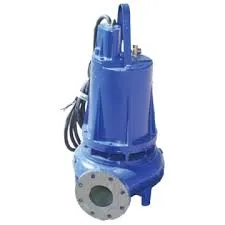TEL:
+86 13120555503
English
- Afrikaans
- Albanian
- Amharic
- Arabic
- Armenian
- Azerbaijani
- Basque
- Belarusian
- Bengali
- Bosnian
- Bulgarian
- Catalan
- Cebuano
- Corsican
- Croatian
- Czech
- Danish
- Dutch
- English
- Esperanto
- Estonian
- Finnish
- French
- Frisian
- Galician
- Georgian
- German
- Greek
- Gujarati
- Haitian Creole
- hausa
- hawaiian
- Hebrew
- Hindi
- Miao
- Hungarian
- Icelandic
- igbo
- Indonesian
- irish
- Italian
- Japanese
- Javanese
- Kannada
- kazakh
- Khmer
- Rwandese
- Korean
- Kurdish
- Kyrgyz
- Lao
- Latin
- Latvian
- Lithuanian
- Luxembourgish
- Macedonian
- Malgashi
- Malay
- Malayalam
- Maltese
- Maori
- Marathi
- Mongolian
- Myanmar
- Nepali
- Norwegian
- Norwegian
- Occitan
- Pashto
- Persian
- Polish
- Portuguese
- Punjabi
- Romanian
- Russian
- Samoan
- Scottish Gaelic
- Serbian
- Sesotho
- Shona
- Sindhi
- Sinhala
- Slovak
- Slovenian
- Somali
- Spanish
- Sundanese
- Swahili
- Swedish
- Tagalog
- Tajik
- Tamil
- Tatar
- Telugu
- Thai
- Turkish
- Turkmen
- Ukrainian
- Urdu
- Uighur
- Uzbek
- Vietnamese
- Welsh
- Bantu
- Yiddish
- Yoruba
- Zulu
Telephone: +86 13120555503
Email: frank@cypump.com
Jan . 14, 2025 12:30 Back to list
slurry pump specification
In the rapidly evolving world of industrial processes, the role of slurry pumps is indispensable. As machinery that transfers a mixture of solid particles and liquid, slurry pumps are paramount in mining, dredging, and waste treatment. Understanding the specifications of slurry pumps can be daunting due to the vast array of options available, making this subject critical for those seeking optimal application efficiency and cost-effectiveness.
The size of the slurry pump should correspond with the specifics of the intended application. Oversizing can lead to excessive energy consumption and operational inefficiencies, while undersizing might result in increased wear and tear, elevated maintenance costs, and ultimately, equipment failure. Manufacturers typically provide detailed guidelines and performance curves that are instrumental in pinpointing the pump that aligns seamlessly with system requirements. Operational reliability, while often overlooked, is a vital consideration in slurry pump specification. This involves evaluating the total cost of ownership, encompassing not just the initial purchase price but also aspects like energy consumption, maintenance needs, and serviceability. Industry case studies consistently highlight that pumps with higher upfront costs can offer superior lifetime value due to lower maintenance demands and greater operational efficiency. In enhancing trustworthiness, always ensure that the slurry pump specifications align with industry standards such as those set by the Hydraulic Institute or ISO. Adhering to these standards reflects a commitment to safety, quality, and performance reliability, which is a fundamental expectation within the industry. Engaging with experienced engineers and pump specialists can provide invaluable insights, often translating real-world challenges into tailored solutions and ensuring that the pump selected not only meets technical requirements but also contributes positively to overall operational productivity and sustainability. Selecting and specifying a slurry pump necessitates a comprehensive approach that goes beyond basic technical data. By focusing on user experience and the specific demands of an application, coupled with a deep understanding of pump technology and materials, one can make informed decisions ensuring operational excellence and long-term success. Such a strategic approach, when shared and documented accurately, often serves as a trusted guide for others navigating similar challenges, thereby establishing authority and expertise in the field.


The size of the slurry pump should correspond with the specifics of the intended application. Oversizing can lead to excessive energy consumption and operational inefficiencies, while undersizing might result in increased wear and tear, elevated maintenance costs, and ultimately, equipment failure. Manufacturers typically provide detailed guidelines and performance curves that are instrumental in pinpointing the pump that aligns seamlessly with system requirements. Operational reliability, while often overlooked, is a vital consideration in slurry pump specification. This involves evaluating the total cost of ownership, encompassing not just the initial purchase price but also aspects like energy consumption, maintenance needs, and serviceability. Industry case studies consistently highlight that pumps with higher upfront costs can offer superior lifetime value due to lower maintenance demands and greater operational efficiency. In enhancing trustworthiness, always ensure that the slurry pump specifications align with industry standards such as those set by the Hydraulic Institute or ISO. Adhering to these standards reflects a commitment to safety, quality, and performance reliability, which is a fundamental expectation within the industry. Engaging with experienced engineers and pump specialists can provide invaluable insights, often translating real-world challenges into tailored solutions and ensuring that the pump selected not only meets technical requirements but also contributes positively to overall operational productivity and sustainability. Selecting and specifying a slurry pump necessitates a comprehensive approach that goes beyond basic technical data. By focusing on user experience and the specific demands of an application, coupled with a deep understanding of pump technology and materials, one can make informed decisions ensuring operational excellence and long-term success. Such a strategic approach, when shared and documented accurately, often serves as a trusted guide for others navigating similar challenges, thereby establishing authority and expertise in the field.
Share
Latest news
-
ISG Series Vertical Pipeline Pump - Chi Yuan Pumps Co., LTD.|Advanced Hydraulic Design&Energy-Efficient Solutions
NewsJul.30,2025
-
ISG Series Vertical Pipeline Pump - Chi Yuan Pumps Co., LTD.
NewsJul.30,2025
-
ISG Series Vertical Pipeline Pump - Chi Yuan Pumps Co., LTD.|energy-efficient fluid handling&industrial durability
NewsJul.30,2025
-
ISG Series Vertical Pipeline Pump - Chi Yuan Pumps | Advanced Engineering&Industrial Efficiency
NewsJul.30,2025
-
ISG Series Pipeline Pump - Chi Yuan Pumps | High Efficiency, Energy Saving
NewsJul.30,2025
-
ISG Series Vertical Pipeline Pump-Chi Yuan Pumps|High Efficiency&Reliable Performance
NewsJul.29,2025










